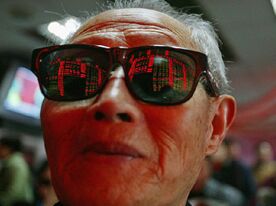投资者看好中国绿色概念股
|
Two events — one that has just happened and one that may be imminent — are swelling the ranks of investors willing to bet that a great environmental rehabilitation in smog-choked China will become a stock market megatrend. First came last week’s decision by Donald Trump to pull the US out of the Paris climate accord, ceding leadership over the global green agenda to China and Europe. Then there is the prospect of MSCI, the index provider, deciding this month to include some Chinese A shares into one of its benchmarks for the first time. “What the Chinese dream about is blue sky and blue water,” says Karine Hirn, partner at East Capital, an emerging market asset manager. “Investment into the global leaders in environmental protection is very exciting.”
Environmental degradation in China — the biggest emitter of greenhouse gases — has created an unstoppable “green” momentum, galvanised by social pressure and reinforced by Beijing’s regulatory will. This means there is no chance that Beijing will follow the US and back out of the 2015 Paris agreement to combat climate change, says Wang Yao, director-general of the International Institute of Green Finance in Beijing. Mr Trump’s move “makes China into a leader”, she adds in an interview. “But really we are just doing what we must do for our own domestic reasons. We face a very serious environmental challenge so we must continue with green development.” This imperative has accelerated an avalanche of investment in clean technologies, green transportation and renewable energy in the past few years. China has more than a third of the world’s wind power capacity; a quarter of its solar power; six of the top 10 solar-panel makers; and four of the top 10 wind turbine makers. It recorded more battery-only electric car sales last year than the rest of the world combined. Ms Hirn estimates that a sum roughly equivalent to the GDP of Denmark is invested in Chinese clean tech each year, while the total market capitalisation of about 350 listed green Chinese companies is about $600bn. But although these are big numbers, she says, China will need far greater investment if it hopes to rehabilitate its contaminated air, land and water. John Lin, portfolio manager at AllianceBernstein, is also animated by the green theme. Opportunities have come in industries where small polluting factories have been shut en masse, boosting profit margins for larger environmentally friendly group, he says. In paper production, shares in Nine Dragons Paper and Shandong Chenming Paper have impressed, while there have been beneficiaries in steel, non-ferrous metals and chemicals, Mr Lin says. Ms Hirn favours the clean transportation theme, particularly companies involved in new energy vehicle technology. Opportunities beckon in waste management and air pollution control as local governments answer exhortations from Beijing to clean up their cities, she adds. Many companies that stand to gain from the green agenda are listed on the $7tn domestic A-share market, which remains exotic for many overseas funds. However, this could change on June 20. If MSCI decides to include A shares in its emerging markets index, passive managers will be obliged to take on exposure for the first time, while active managers seek the best Chinese stocks, says Caroline Owen, chief executive, of RMB Global Advisors in New York. “We are on the verge of one of the greatest rebalancings in global portfolios in recent years,” she says. MSCI delayed inclusion for a third straight year last June, citing regulatory worries and the need for greater accessibility for global investors. This year it has reduced the number of A shares slated for inclusion from 448 to 169, in a move that was intended to make inclusion more palatable to global asset managers. However, it is possible that yet again the decision will be negative. “I heard there were some technical issues that may make it tough to include A shares this year,” says a fund manager who declined to be identified. |









